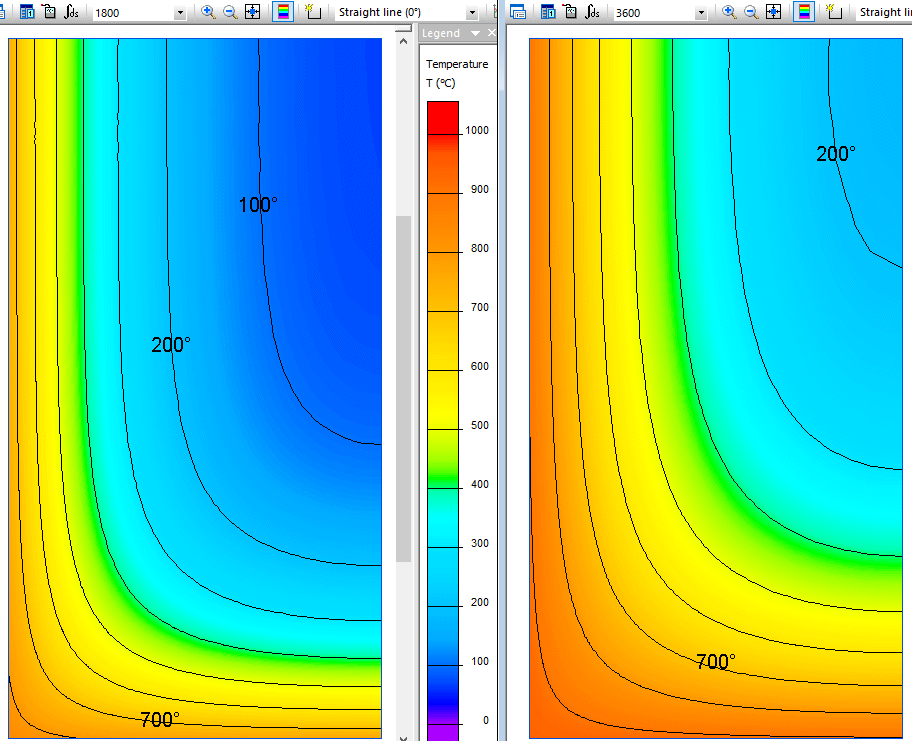EN 1992-1-2:2004*. Structural fire design
QuickField simulation example
The fire may destroy not only wooden construction but also damage a concrete structure. At high temperature concrete loses its structural integrity.
This is an example of a concrete column subjected to the high temperature of the standard fire (ISO 834**). The task is to calculate the temperature distribution in the column in time.
Problem Type
Plane-parallel problem of Transient heat transfer.
Geometry
Given
The standard fire temperature-time curve is defined by the ISO 834*:
T(t) = T0 + 345*log10(8*t + 1), where t is time in minutes and T0=20°C is an initial temperature.
Convection coefficient is 25 W/K-m², emissivity coefficient of concrete surface is 0.7.
Concrete thermal conductivity λ(T) = 1.36 - 0.136*(T/100) + 0.0057*(T/100)² W/m-K
Concrete specific heat capacity C depends on temperature
Concrete density ρ variation with temperature is influenced by water loss.
Task
Calculate the temperature field.
Solution
In EN 1992-1-2:2004** only a quarter of the slab is simulated. So we also utilize symmetry of the model and simulate only a quarter.
In QuickField the density ρ must be a constant. We specify density to be ρ(20°C) and attenuated specific heat dependency to take into account ρ(T):
C'(T) = C(T) * ρ(T)/ρ(20°C);
Results
Temperature profiles 30 minutes and 60 minutes after the fire is started.

References:
*ISO 834-1:1999. Fire-resistance tests — Elements of building construction — Part 1: General requirements
**EN 1992-1-2:2004 Design of concrete structures - Part 1-2: General rules - Structural fire design.
- Video: EN 1992-1-2:2004. Structural fire design. Watch on Youtube
- Download simulation files (files may be viewed using any QuickField Edition).